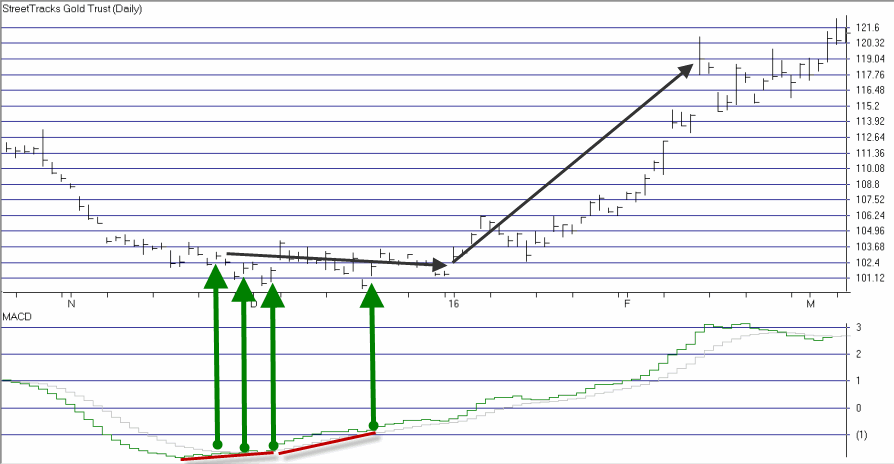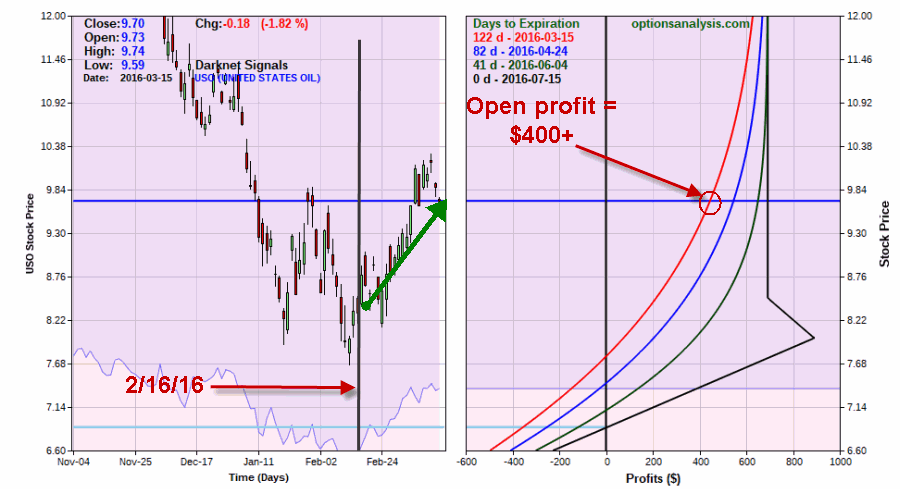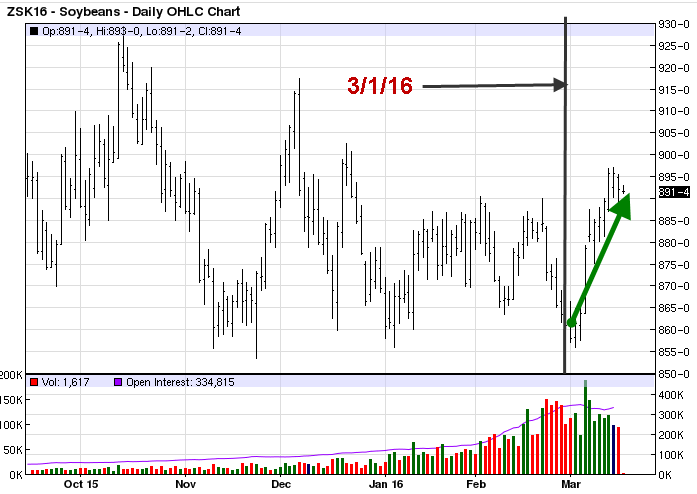In this article I detailed one relatively “simple” approach to using the MACD indicator to identify potentially bullish opportunities. In this piece we will look at one to actually put those signals to use.
The Limited Risk Call Option
One possibility upon generating a bullish signal as described in the last article is to buy shares of the stock/ETF/index/etc in question. Not a thing wrong with that. But there is a less expensive alternative.
Figure 1 reproduces Figure 1 from the last piece showing ticker XLF. Let’s look at the signal generated on 2/12/16.
 Figure 1 – Ticker XLF (Courtesy AIQ TradingExpert)
Figure 1 – Ticker XLF (Courtesy AIQ TradingExpert)
One alternative that I like is to use the “Percent to Double” routine at www.OptionsAnalysis.com to find an inexpensive call option that has lot of upside potential. The input screen with a few key input selections highlighted appears in Figure 1a (if it looks intimidating please note that a reusable set of criteria can be captured in a “Saved Wizard”, which appear towards the lower right of of Figure 1a. Once a set of criteria is saved it can be reused by simply clicking on the Wizard name and clicking “Load”.)
NOTE: My own personal preference is to consider options that have at least 45 days left until expiration (as time decay can become a very negative factor as option expiration draws closer). Figure 1a – Percent to Double Inputs (Courtesy www.OptionsAnalysis.com)
Figure 1a – Percent to Double Inputs (Courtesy www.OptionsAnalysis.com)
Figure 1b displays the output screen.
NOTE: For my own purposes I like to see a Delta of at least 40 for the option I might consider buying (nothing “scientific” here. It is just that the lower the Delta the further out-of-the-money the option strike price is. I prefer to buy a strike price that is not too far from the current price of the stock; hence I look for a Delta of 40 or higher). With XLF trading at $20.49, in Figure 1b I have highlighted the 2nd choice on the list – the April 21 call – which has a delta of 43. Figure 1b – Percent to Double Output (Courtesy www.OptionsAnalysis.com)
Figure 1b – Percent to Double Output (Courtesy www.OptionsAnalysis.com)
So a trader now has two alternatives:
*Buy 2 Apr 21 strike price XLF calls for $70 apiece ($140 total cost; 86 total deltas)
*Buy 86 shares of XLF at $20.49 apiece ($1,760 total cost, 86 total deltas)
Figure 1c displays the particulars for buying a 2-lot of the April 21 call for a total cost of $140.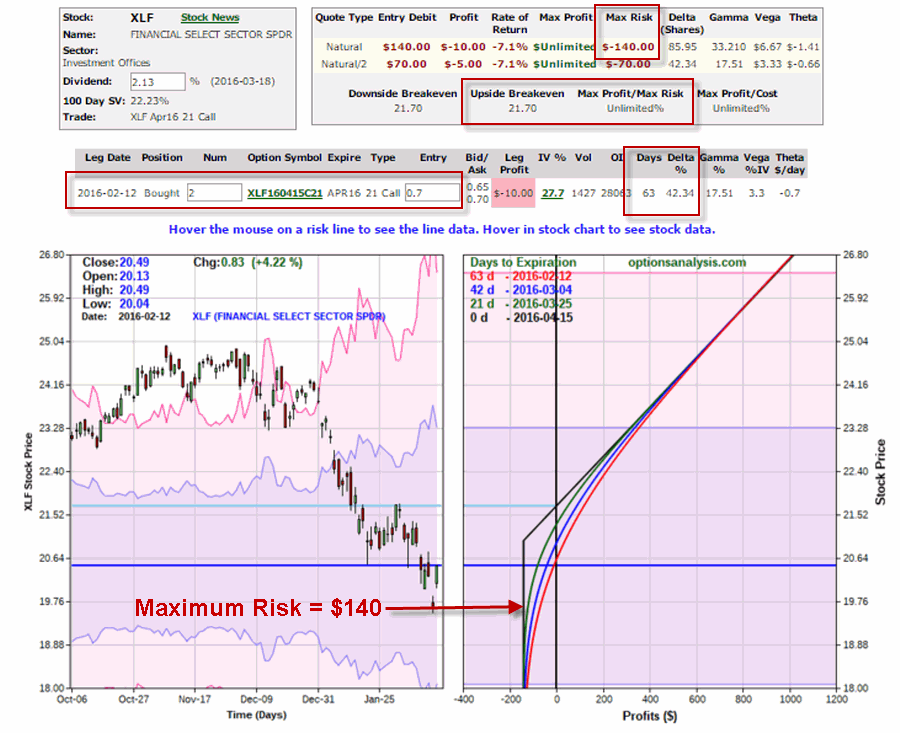 Figure 1c – XLF Apr 21 call (Courtesy www.OptionsAnalysis.com)
Figure 1c – XLF Apr 21 call (Courtesy www.OptionsAnalysis.com)
By 3/18 the shares had gained 11% and the Apr 21 call had gained 143%. See Figure 1d.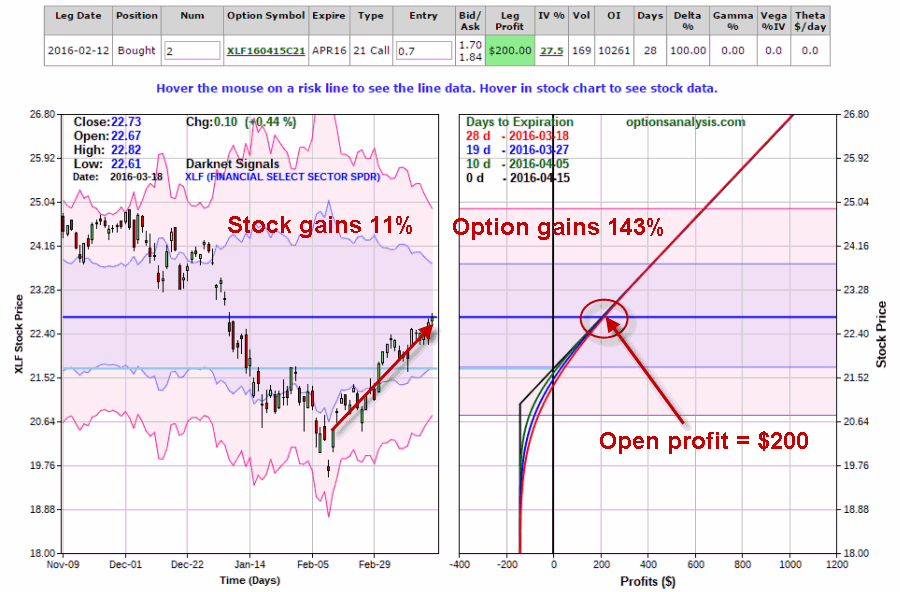 Figure 1d – XLF Apr 21 call (Courtesy www.OptionsAnalysis.com)
Figure 1d – XLF Apr 21 call (Courtesy www.OptionsAnalysis.com)
Summary
Obviously not every trade works out as well as this one. Still, the key things to remember are:
*The option trade cost $140 instead of $1760
*The worst case scenario was a loss of $140.
Something to think about.
Jay Kaeppel


